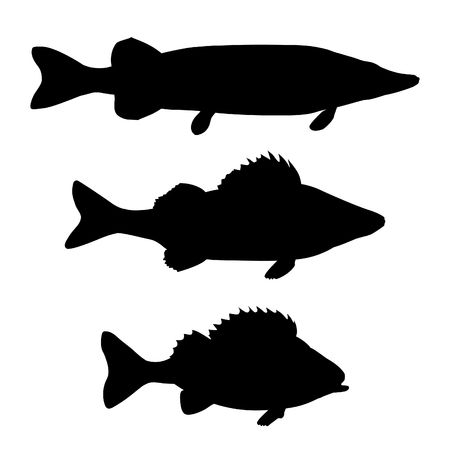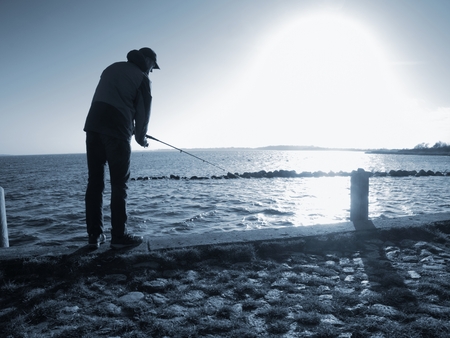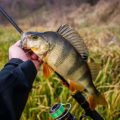Understanding Cod Habits in British Waters
When it comes to night fishing for cod around the UK coastline, an appreciation of the species’ life cycle and behaviour is indispensable. Cod (Gadus morhua) are a staple of British marine life, renowned for their elusive nature after dusk. These fish favour temperate, oxygen-rich waters, often congregating near rocky outcrops, kelp beds, and wrecks – classic features scattered from the North Sea down to the Bristol Channel. Nighttime transforms these areas into prime hunting grounds, as cod become more active under cover of darkness. Understanding their preferred habitats helps anglers pinpoint productive marks along beaches, estuaries, or piers. Seasonal shifts also play a pivotal role: autumn and winter see mature cod migrating inshore to spawn, making late evenings from October through February especially fruitful for night sessions. By tuning into the cod’s nocturnal rhythms and recognising how tides and moon phases influence their feeding patterns, you’ll lay the groundwork for successful—and memorable—night fishing adventures on Britain’s storied shores.
2. Essential Night Fishing Tackle and Gear
If you’re venturing out for cod after dark along British shores, having the right tackle and kit is crucial—not just for success, but also for safety and comfort in our famously changeable weather. Let’s break down what you’ll need for an effective and enjoyable night fishing session targeting cod.
British-Standard Rods and Reels
A robust rod and reel setup makes all the difference when casting into surf or from rocky marks. For cod, a beachcaster rod between 12–14ft is ideal—giving you the backbone to punch heavy baits through the surf and handle the weighty pull of a good-sized fish. Pair this with a sturdy fixed spool or multiplier reel loaded with 15–20lb mainline, adding a shockleader for distance casts. This combination provides both reach and resilience for tackling British coastal conditions.
Rigs and Bait: Tried-and-Tested Cod Catchers
When it comes to rigs, simplicity married with reliability works best. The Pennell pulley rig is a British favourite—its dual hook design perfectly presents larger baits like lugworm or squid while minimising snags on rough ground. Below is a handy table summarising popular choices:
| Component | Recommended Options |
|---|---|
| Rod | 12–14ft Beachcaster (medium-heavy action) |
| Reel | 6000–8000 size Fixed Spool or Multiplier |
| Mainline | 15–20lb Mono/Braid + Shockleader (60lb) |
| Rig | Pennell Pulley, Simple Paternoster |
| Bait | Lugworm, Squid, Peeler Crab (fresh/frozen) |
Lamps and Lighting for Night Sessions
You can’t overstate the importance of good lighting when night fishing around UK waters. A reliable headlamp with red light mode preserves your night vision while handling bait or unhooking fish. Lanterns or compact LED floodlights are essential for illuminating your working area safely—especially if you’re fishing rocky marks or piers.
Dressing Right: Clothing and Weather Essentials
The unpredictable British weather demands layers—start with thermal base layers, add a waterproof jacket and trousers, and finish with insulated boots. Don’t overlook essentials like woolly hats, neck gaiters, and fingerless gloves; these keep you warm but allow dexterity when tying knots or baiting hooks. Always pack an extra set of dry clothes in case of unexpected downpours.
Other Practical Kit for Comfort and Safety
Your gear list should include a comfortable seat box or folding chair, a sturdy tripod rod rest (essential for keeping rods out of sand or shingle), spare batteries, a first-aid kit, flask of hot tea, snacks, and a fully charged mobile phone in a waterproof pouch. With these items stowed in your kit bag, you’ll be well-prepared to face whatever the British coast throws your way on a night’s cod hunt.

3. Prime Locations: UK Cod Hotspots after Dark
When the sun dips below the horizon, British waters come alive with opportunities for cod fishing, especially for those willing to venture out after dark. The UK’s coastline boasts a rich tapestry of cod marks—some well-trodden by generations of anglers, others kept close to the chest by local enthusiasts. For night sessions, knowing where to set up is half the battle won.
North Sea Piers and Promenades
The North Sea coastline is legendary for its cod runs during autumn and winter nights. Classic hotspots such as Sunderland Pier, Roker Pier, and Whitley Bay draw crowds when conditions are right. These public piers offer solid access, shelter from prevailing winds, and deep water within easy casting range—perfect for ledgering big baits into the dark depths where cod lurk.
Yorkshire and Lincolnshire Beaches
Moving down the coast, stretches like Cleethorpes Beach, Hornsea, and Withernsea attract savvy night anglers in search of double-figure fish. Here, local knowledge pays off: pay attention to tide times, sandbank formations, and the presence of natural features such as groynes or outflow pipes that concentrate baitfish—and in turn, predatory cod.
Mersey Estuary and Welsh Marks
The Mersey Estuary is famous for producing specimen-sized cod under cover of darkness. Night fishing from spots like Otterspool Promenade or Perch Rock can be electric when river conditions align with incoming tides. Across to North Wales, marks around Llandudno and the rugged Llyn Peninsula offer less crowded alternatives with just as much potential—if you’re prepared to hike or scramble down rocky paths.
Cornish Coves and West Country Secrets
No roundup would be complete without a nod to Cornwall’s hidden gems. Secluded coves near Penzance, rocky outcrops at St Agnes Head, and even small harbours like Mevagissey all hold night-time promise. Many of these require local insight; respectful inquiry at tackle shops or pubs can yield valuable tips on which marks are both productive and safely accessible after dark.
Navigating Local Nuances and Etiquette
Wherever you choose to cast your line, remember that access varies—some piers close overnight while others remain open year-round. Always check local bylaws and respect private property. In some regions, discreetness is key: secretive marks passed down through word of mouth are best enjoyed quietly, ensuring these unique British fishing traditions endure for future generations.
4. Effective Night Angling Strategies
For those venturing out into the British night, understanding and applying tried-and-true local techniques can make all the difference when targeting cod. The dark hours demand a blend of skill, subtlety, and awareness—attributes that define successful anglers along our storied coasts. Below, we delve into the essentials for night cod fishing, each rooted in British angling tradition and etiquette.
Bait Presentation: Tempting the Nocturnal Cod
The right bait presentation is paramount after dusk. Cod are opportunistic but cautious at night, so using fresh bait such as lugworm, squid, or peeler crab rigged attractively is key. A flowing trace or pulley rig allows for natural movement with the tide, mimicking prey and increasing your chances. Keep hooks sharp and avoid excessive tackle bling; subtlety often prevails under cover of darkness.
Tide Timing: Reading the Water
Certain tide states are renowned among British anglers for producing cod. Generally, two hours either side of high tide yield the best results, especially on spring tides when more food is stirred up. Consult local tide tables and note how different marks fish on various tides—a practice respected by seasoned locals.
| Tide State | Best Time to Fish | Reason |
|---|---|---|
| Flood Tide | 2 hours before high tide to 1 hour after | Increased movement brings food closer to shore |
| Ebb Tide | First 2 hours after high tide | Cod follow food retreating back out to sea |
Stealth and Quiet Approaches
Nights are naturally quieter along the coastline—cod respond accordingly. Approach your mark with care: avoid shining torches directly onto the water and keep noise to a minimum. Set up your kit before dusk if possible to reduce disturbance. Some anglers even use blackout cloths or hoods over lamps to preserve night vision while keeping their presence subtle.
Marker Use: Precision in the Dark
In familiar waters, pre-set markers—like luminous sticks or reflective tape on rocks—can help you cast accurately without repeated torch use. If you’re new to a mark, map it during daylight and make mental notes of features such as gullies or sandbanks. This approach not only improves your efficiency but also helps prevent tangles with neighbouring anglers’ lines—a nod to good form along busy marks.
Respecting Local Angling Etiquette
A successful night’s fishing isn’t just about what you catch—it’s also about how you conduct yourself. Respect casting distances, tidy up all gear and litter, and greet fellow anglers courteously. Many coastal communities value tradition and harmony on the shore; embracing these values ensures that everyone can enjoy a fruitful session beneath Britain’s starry skies.
5. Safety Considerations on the British Coast
Night fishing for cod along the British coastline is a rewarding pursuit, but it demands respect for the unique hazards present after dark. The interplay of tides, unpredictable weather, and rugged terrain means that even seasoned anglers must remain vigilant. Here are some practical tips to ensure your safety while enjoying this classic UK pastime.
Tide Awareness
The tidal range around Britain can be dramatic, especially in areas like the Bristol Channel or the North Sea coast. Always consult local tide tables before setting out, and plan your session to avoid being cut off by a rising tide. Mark your safe exit routes clearly and check them periodically throughout the night.
Weather Preparedness
British weather is notoriously fickle. Check multiple forecasts before heading out and prepare for rapid changes in wind, rain, and temperature. Waterproofs, layered clothing, and a sturdy shelter can make the difference between an enjoyable session and an uncomfortable—or even dangerous—one.
Cliffs and Shingle Banks
Many productive cod marks are found near cliffs or steep shingle beaches. These areas are particularly treacherous at night. Use a reliable headlamp with spare batteries, watch your footing, and never fish alone on unstable ground. Avoid climbing down unfamiliar cliff paths in darkness, as erosion or wet rocks can lead to slips and falls.
Communication Is Key
Mobile signal can be patchy in remote coastal areas, so don’t rely solely on your phone. Carry a whistle or a torch with an SOS strobe function for emergencies. Let someone responsible know your exact location, planned return time, and any changes to your plans.
Final Precautions
Pack a basic first aid kit, familiarise yourself with local emergency numbers (999 or 112 in the UK), and consider downloading a location-sharing app such as What3Words for precise navigation if you need assistance. With careful preparation and respect for the elements, you’ll be free to focus on the thrill of landing a British cod under starry skies.
6. Observing and Respecting Local Marine Life
Night fishing for cod along Britain’s storied coasts offers more than the thrill of a good catch—it’s a privileged encounter with the vibrant tapestry of marine life that calls these waters home. Whether you’re casting from rugged Cornish rocks or the shingle beaches of Yorkshire, it’s essential to fish with an ethos of mindfulness and respect for local wildlife. Take a moment to observe your surroundings: seals may surface near your lines, seabirds wheel overhead, and lesser-spotted dogfish sometimes make a surprise appearance in your net. Embrace this opportunity to connect with nature, but always remember your responsibilities.
Responsible Waste Management
One key aspect of protecting Britain’s marine environment is diligent waste management. Always pack out what you pack in—discarded tackle, bait packaging, and even stray hooks can pose serious threats to both marine creatures and coastal birds. Carry reusable containers for bait and rubbish bags for any litter you find, leaving your chosen spot cleaner than you found it. Not only does this simple act safeguard local habitats, but it also preserves the beauty of our wild places for fellow anglers and future generations.
Catch-and-Release Ethics
Practising catch-and-release where appropriate is another vital step toward sustainability. If you land a cod that’s undersized or if regulations recommend releasing certain species, handle the fish with wet hands or a gentle cloth to protect its delicate slime coating. Remove hooks swiftly and carefully using forceps or disgorger tools, and support the fish in the water until it swims away strongly. By adopting these habits, we ensure that cod stocks remain healthy and resilient for years to come.
Mindful Angling: A Lasting Legacy
Ultimately, night fishing in British waters is about more than tallying up catches—it’s about forging a respectful relationship with the sea. By remaining mindful of native wildlife, managing our waste responsibly, and practising ethical angling methods such as catch-and-release, we play our part in safeguarding Britain’s rich marine heritage. Let each trip become an act of stewardship as well as adventure; after all, the true prize lies in preserving these remarkable waters for future nights under starlit British skies.


